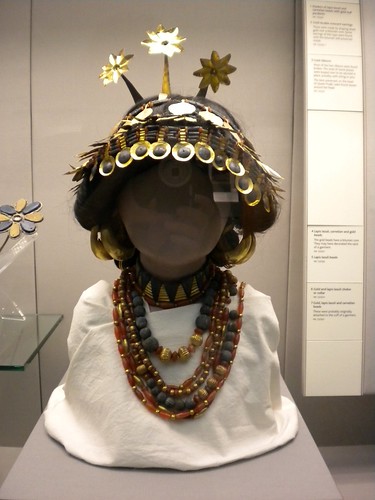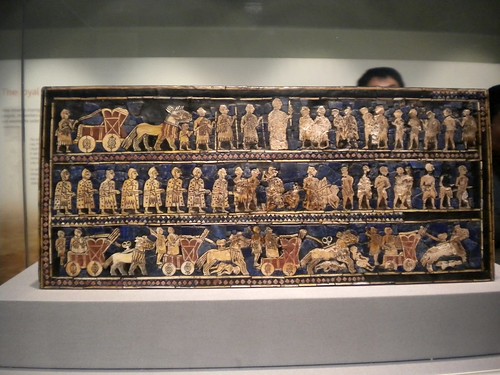After the collapse of the Ur III Dynasty in the Middle East around 2000 BCE the region fragmented into several different rival states which fought amongst themselves trying to establish overall political control. This lasted throughout the Middle Bronze Age and the Late Bronze Age, until the Assyrian Empire rose to control the whole region in the late 8th Century BCE. This chapter of the book is split into three sections, and this blog post is only really about the first of these which covers the earlier and more southern & eastern states in the region.
Orientation Dates
- 2100-1600 BCE – the Xia Dynasty in China (post)
- 2055-1650 BCE – Egypt’s Middle Kingdom
Power Struggles: Kingdoms at War
The chapter as a whole is positioned as being about power struggles between the various polities, although it is mostly a geographical and temporal survey of the states in question. In fairness to the book it seems hard to draw out a narrative for this period that covers the whole region. Before there were either a collection of culturally related but politically distinct city states, or the Akkadian Empire or Ur III Dynasty empire. After this, there will be the Assyrian Empire, the Babylonian Empire and then the Persian Empire. But this intermediate period has some key players and a whole selection of minor or temporary states – followed by the rise of the Assyrians (which is interrupted by the Bronze Age Collapse around 1200 BCE). So despite my increasing tendency to judge this book harshly (it really needed a stronger editorial hand at the tiller) it also seems a complex period to distil into a single chapter overview.
The Growth of City States
One of the themes immediately after the collapse of the Ur III Dynasty is that the Amorites infiltrate into the pre-existing settlements and city states of the region. The Amorites are a cultural group from what’s now Syria and in contrast to the many city states of Mesopotamia they were still nomadic to some degree until the Middle Bronze Age. They first show up in the historical record during the Akkadian Empire, and are also one of the peoples against whom the Ur III kings built their walls. During the Middle Bronze Age they seem to have had a knack for integrating into and coming to dominate the elites of many city states. For instance there are 17 Amorite “kings who dwelt in tents” who become part of the Assyrian King List, despite the fact that they are clearly not from Assur and not Assyrian.
One of the cities the Amorites ruled was Eshnunna – located in the Diyala River Valley in modern east central Iraq, with a modern name of Tell Asmar. This city had been a significant Sumerian city in the Early Dynastic period, but after becoming independent from the Ur III Dynasty c.2017 BCE it is ruled over by a series of 19 Amorite kings. The penultimate one of these was Dadusha who issued a legal code that has survived in two copies. Like the slightly later (but better known) code of Hammurabi the laws are of the format “if X occurs, then Y shall be done”. The 60 or so laws cover a wide variety of subjects from loans and deposits to sexual offences and marital rights.
Around 1766 BCE Eshnunna was captured by the Elamites whose heartland was to the north in modern southwestern Iran. The Elamites had been ruled over first by the Akkadians and then the Ur III Dynasty, from whom they won their independence around the same time as Eshnunna did. They spoke a language that is an isolate with no known relatives either modern or ancient. Their conquest of Eshnunna and thus foothold in Mesopotamia made them a “power-broker” in the politics of the region. But c.1500 BCE their ruling dynasty collapses (for unknown reasons) and subsequently they are less important politically. They continue to exist as a culture, however – 500 years later Elamite archers are referred to as an important part of the Persian army.
The city of Assur was captured by Amorites around 1814 BCE, the conqueror (Shamshi-adad I) went on to add most of Upper Mesopotamia to his kingdom before he died in c.1781 BCE. Before he took over Assur he was king of an Amorite city to the south by the bank of the Tigris River. However, the Eshnunna discussed above captured his city driving him into exile in Babylon. Once he returned and captured Assur he took pains to retroactively integrate himself and his father into the pre-existing Assyrian elite – both of them appear on the later Assyrian King List and he claimed descent from the earlier rulers of Assur. He reigned as “Great King” or “King of the Universe”, installing his sons as subsiduary kings in strategic locations (one in his original city, and one in Mari which was a prominent city on the Euphrates River). His empire didn’t long outlast him – his sons failed to rule the territory as a cohesive unit and some of their subject cities took advantage of the disruption. One of these sons (Ishme-dagan) was put back on his throne in Ekallatum with the help of Hammurabi but this reduced his status from king in his own right to a vassal of the Babylonians.
Hammurabi had come to the throne of Babylon c.1792 BCE when it was a small state surrounded by more powerful rivals – by the time he died in c.1750 BCE he ruled over the whole of Mesopotamia proper. He wasn’t the first ruler of the First Dynasty of Babylon, but we don’t know much about the rulers for the hundred or so years preceding him. Judging by Hammurabi’s name, and the names of some of his predecessors they are likely to’ve been Amorites originally. At the start of Hammurabi’s reign he concentrated on internal affairs – infrastructure, his code of laws – rather than on expansion of his empire. Babylon was at this time a “junior partner” in an alliance with Shamshi-adad I of Assyria, a situation to be reversed later in Hammurabi’s reign as I discussed above. By 1763 BCE Hammurabi was starting to flex his muscles (metaphorically speaking), and he unified Southern Mesopotamia under his rule shortly after – starting to call himself King of Sumer and Akkad in the style of the Akkadian empire from the 3rd Millennium BCE. He went on to conquer much of the north as well over the next decade. When he died his large state didn’t long outlast him with various territories declaring independence during the reign of his successor. However the book (rather vaguely) still positions this as the start of some sort of continuity for the next 1,000 years of Babylon as a key political player in the region albeit with interruptions and changes of dynasty.
Documentary sources for life in Hammurabi’s Babylonian state come from a couple of different sources. One of these is a large number (thousands) of legal contracts discovered at several different sites throughout southern Mesopotamia. These cover subjects such as purchase of property, loans of silver or barley, marriages, divorces and so on. As well as contracts there are also lawsuits, and most famously the Code of Laws set down by Hammurabi in the early years of his reign. These give evidence of the day to day life of the state which is complemented by a collection of hundreds of letters between Hammurabi and his subordinates (and amongst those subordinates). The letters mostly date to the last dozen or so years when the empire was at its largest and discuss things such as tax collection, the repair & dredging of canals and so on – the bureaucratic minutiae of running a large empire. A third source is less bureaucratic – the literature of the era also survives, including copies the scribes made of literature from earlier times. This includes the creation of the Epic of Gilgamesh from several different earlier Sumerian sources. The scribes didn’t just translate or copy the original Sumerian stories, they wove them together into a cohesive single narrative.
This section of the chapter also includes a double page spread about iron. The Iron Age isn’t considered to start in the Near East till around 1200 BCE, later than the scope of this chapter, but there is some sporadic use of iron before this (even going back as far as the 5th Millennium BCE) . This is known both from objects that’ve been discovered by archaeologists, and also by textual references (such as a gift of an iron ring from the King of Mari to a neighbouring king around 1780 BCE). Early iron objects were probably mostly made from meteoric iron, but some iron would also have been produced as a by-product of copper smelting. Even at the time iron was considered superior to bronze, it was just harder to produce and to work. Once the appropriate techniques had been discovered they remained specialised knowledge in a few regions before gradually spreading throughout the Middle East in the late 2nd Millennium BCE. The book also mentions in passing that the current chronology of iron working may be too conservative – there are iron working installations discovered in Georgia that at the time this book was written were tentatively dated to 1500 BCE, which pushes back the iron age in that area by a few centuries.

